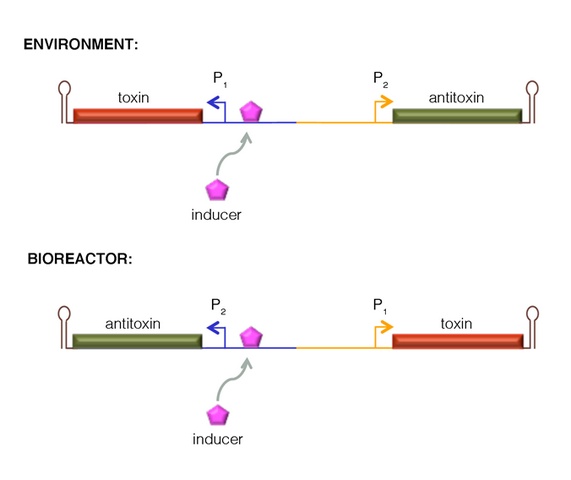Especially in large-scale production facilities bases on genetically modified cyanobacteria, there is an open question about the biosafety of such operations. There inevitably are cyanobacteria in the environment in which GM cyanobacteria are grown, which is especially true for outdoors production plants. For large-scale production, this is likely the only way production can be economically viable.
We devised two approaches to biosafety using synthetic biology tools. In the first approach, we re-wired the existing toxin-antitoxin modules in wild-type cyanobacteria and through modifications of their regulatory regions attempted induced disequilibrium in a way that the toxin would prevent further growth of GM cyanobacteria, but not of their wild-type counterparts.

In the second approach, the kill-switch was composed of a cyanobacterial nuclease and its cognate inhibitor which are in equilibrium within the photobioreactor. Outside, a trigger would increase the concentration of the nuclease which could degrade cell's own nucleic acid. As a consequence, the cell would eventually die, and additionally, the nuclease would degrade DNA so it could not recombine within wild-type cells.
It took us a lot of efforts and very precise work in fine-tuning the regulation of gene expression. Finally, we found combinations of genetic elements that allowed for regulated cell killing in presence of suitable triggers. This work was recently published in Biology Open (Celesnik et al., 2016).